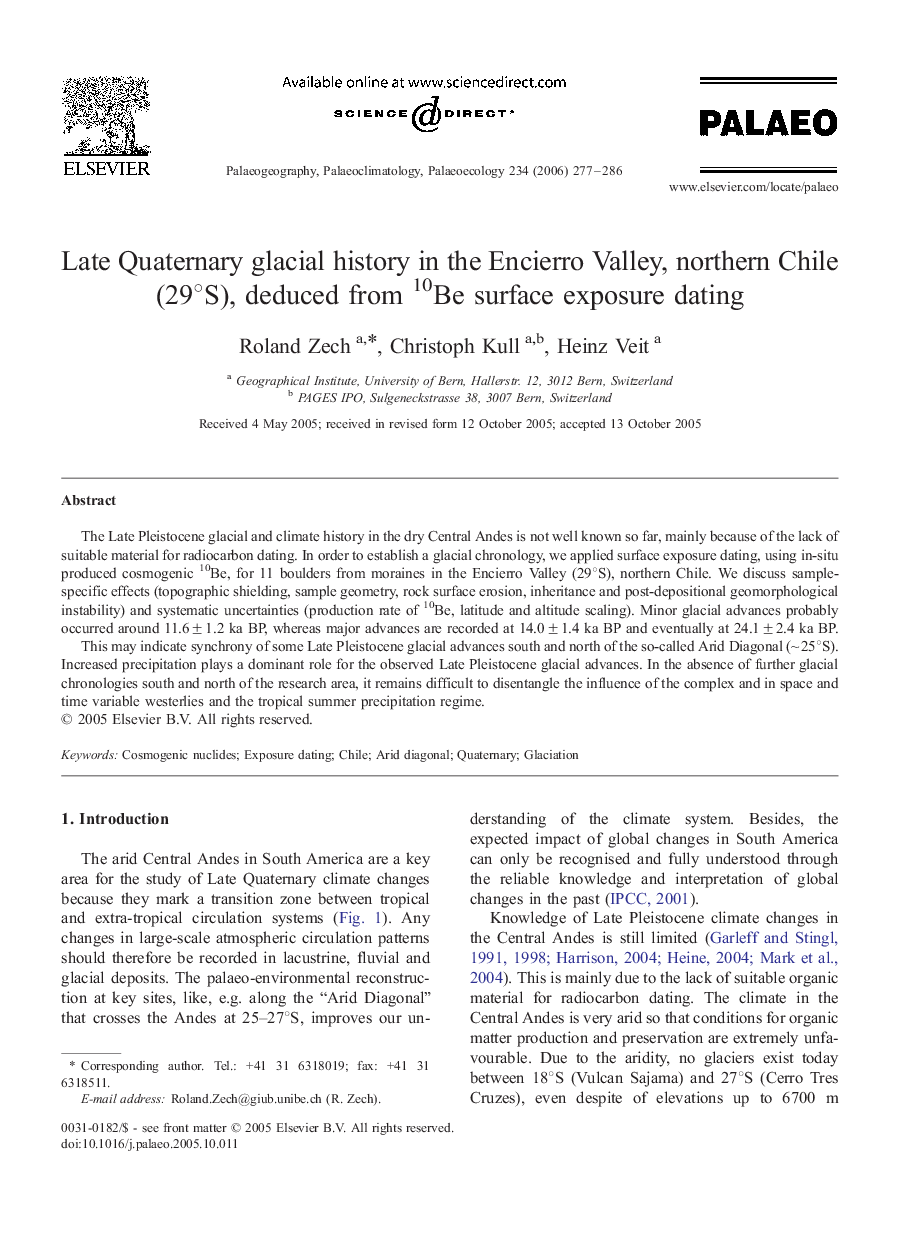| Article ID | Journal | Published Year | Pages | File Type |
|---|---|---|---|---|
| 4469565 | Palaeogeography, Palaeoclimatology, Palaeoecology | 2006 | 10 Pages |
The Late Pleistocene glacial and climate history in the dry Central Andes is not well known so far, mainly because of the lack of suitable material for radiocarbon dating. In order to establish a glacial chronology, we applied surface exposure dating, using in-situ produced cosmogenic 10Be, for 11 boulders from moraines in the Encierro Valley (29°S), northern Chile. We discuss sample-specific effects (topographic shielding, sample geometry, rock surface erosion, inheritance and post-depositional geomorphological instability) and systematic uncertainties (production rate of 10Be, latitude and altitude scaling). Minor glacial advances probably occurred around 11.6 ± 1.2 ka BP, whereas major advances are recorded at 14.0 ± 1.4 ka BP and eventually at 24.1 ± 2.4 ka BP.This may indicate synchrony of some Late Pleistocene glacial advances south and north of the so-called Arid Diagonal (∼ 25°S). Increased precipitation plays a dominant role for the observed Late Pleistocene glacial advances. In the absence of further glacial chronologies south and north of the research area, it remains difficult to disentangle the influence of the complex and in space and time variable westerlies and the tropical summer precipitation regime.
